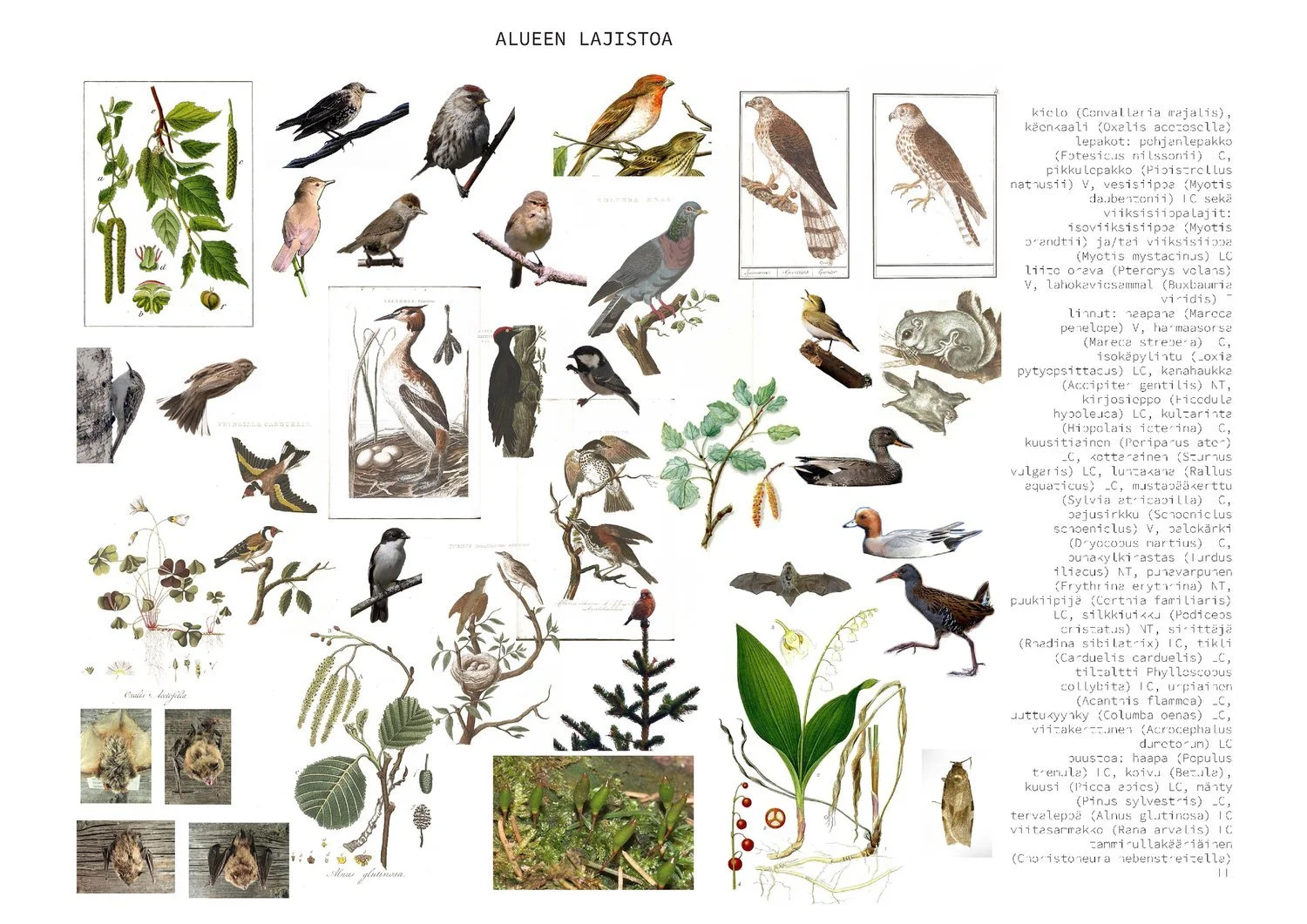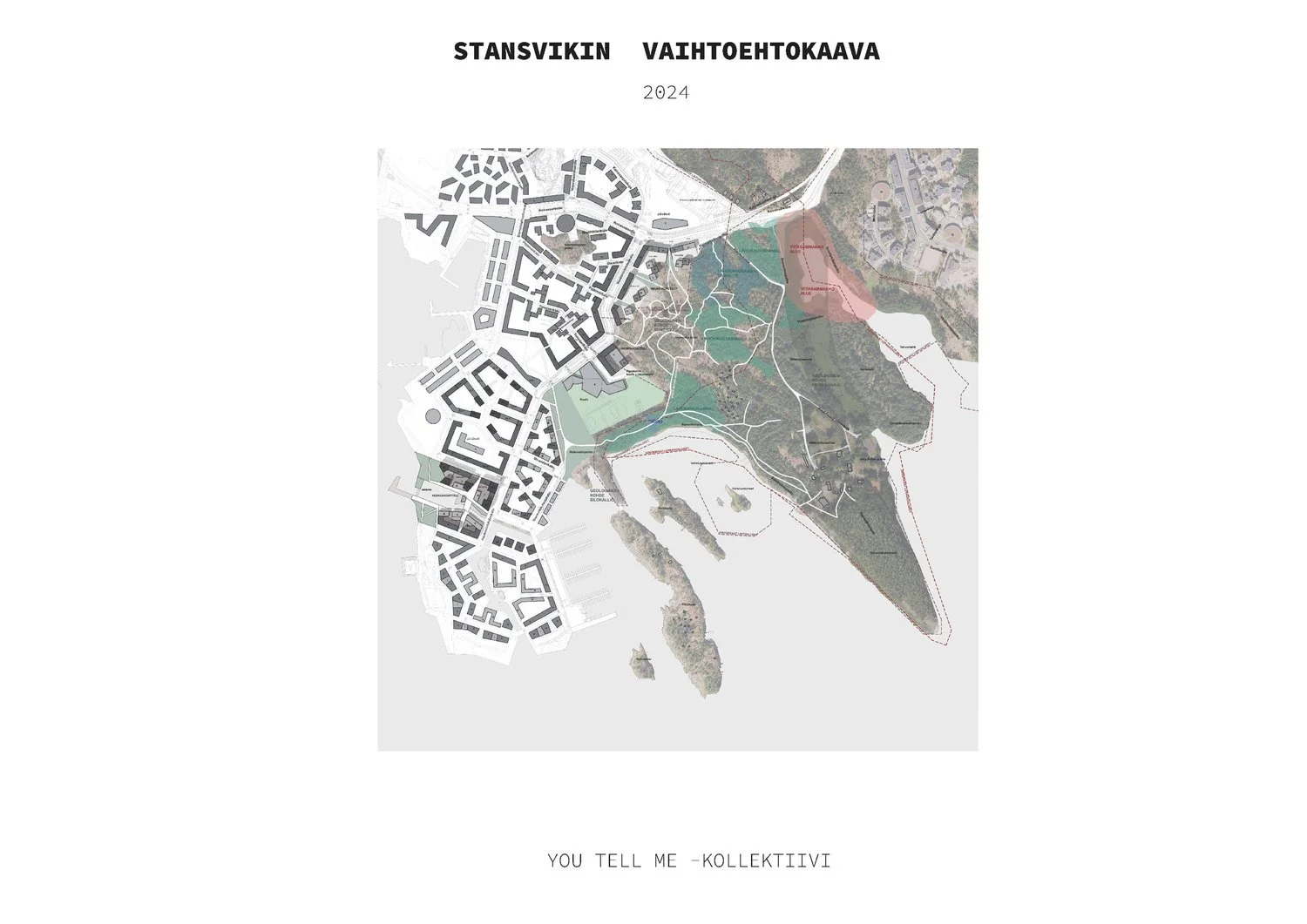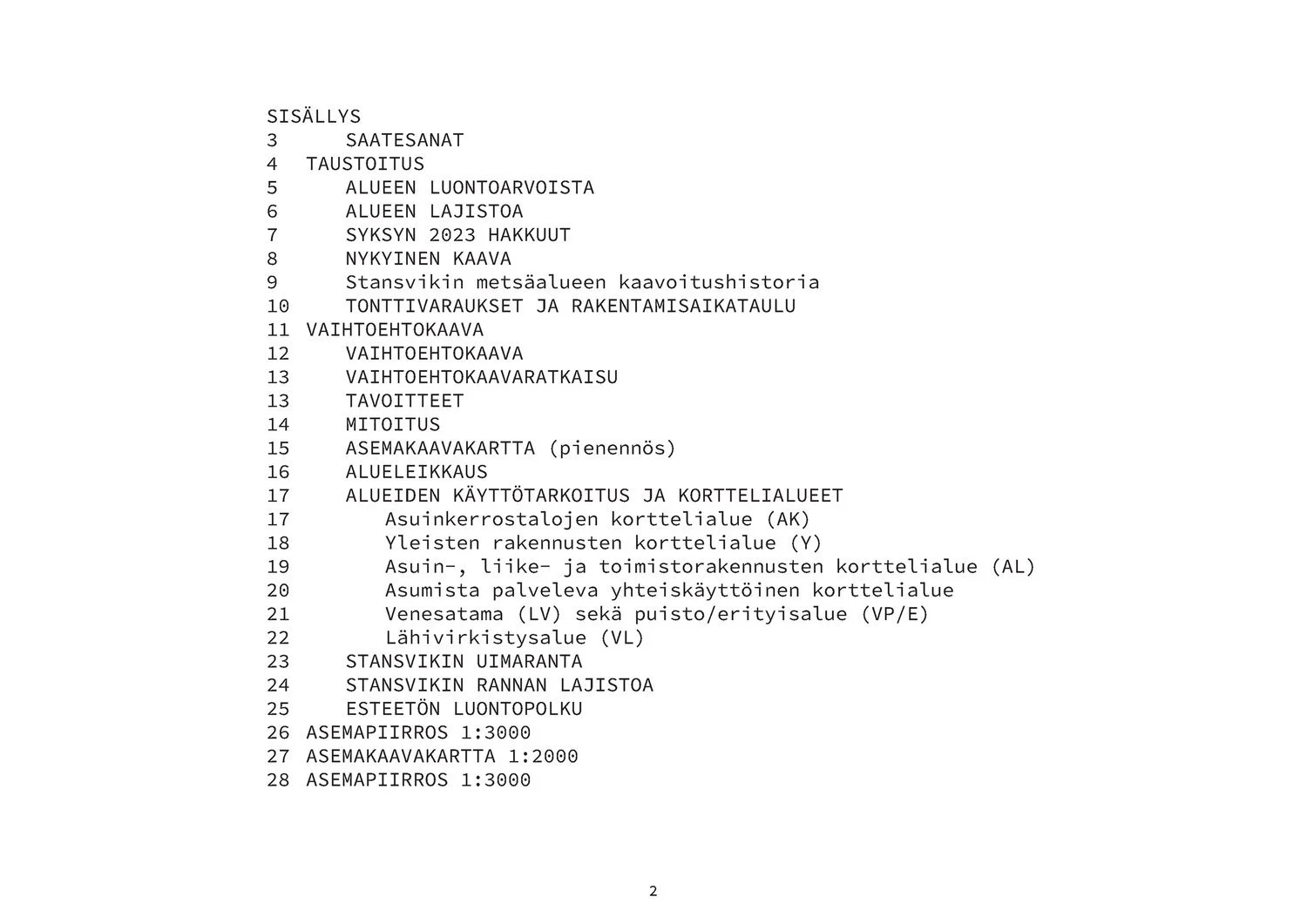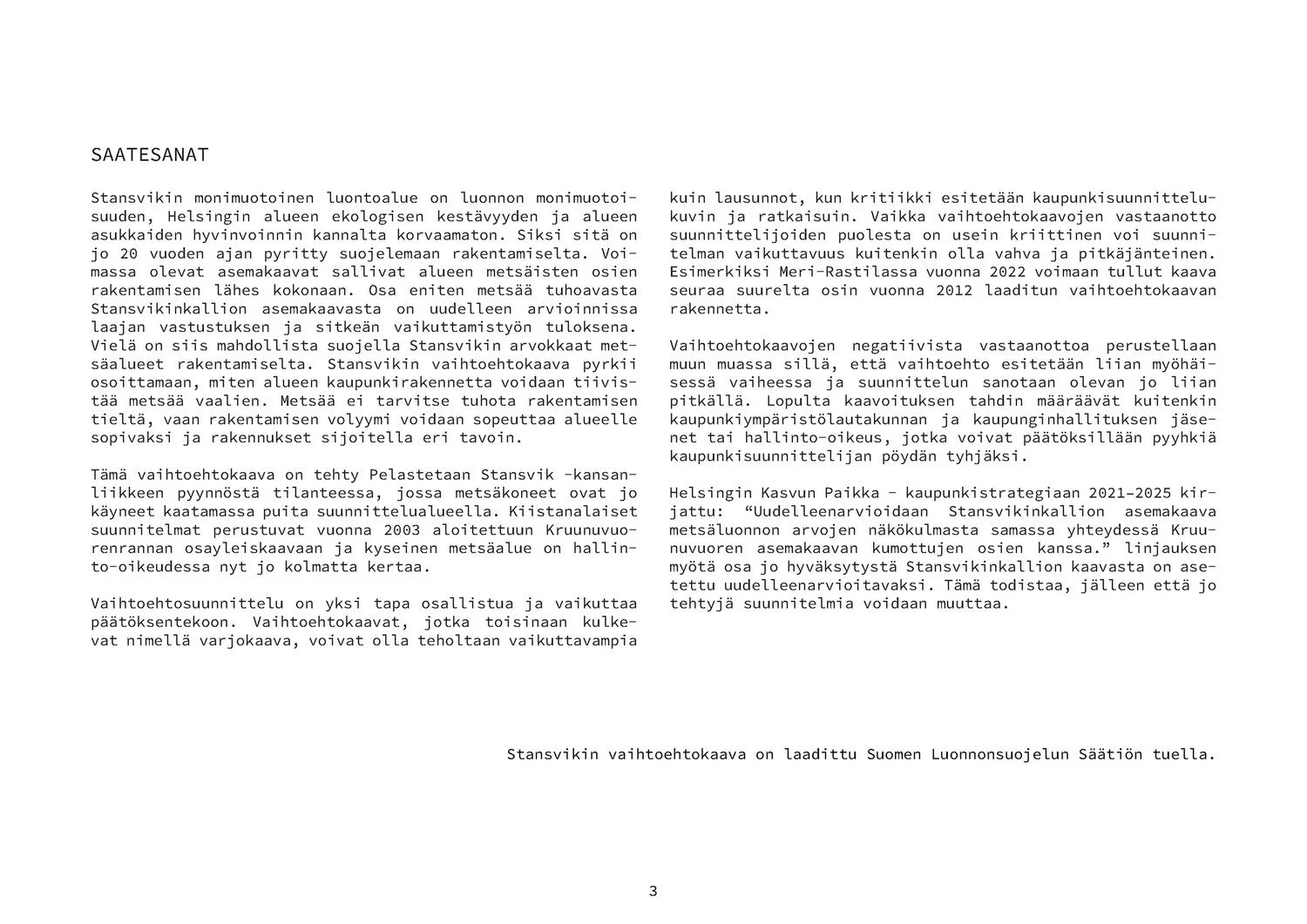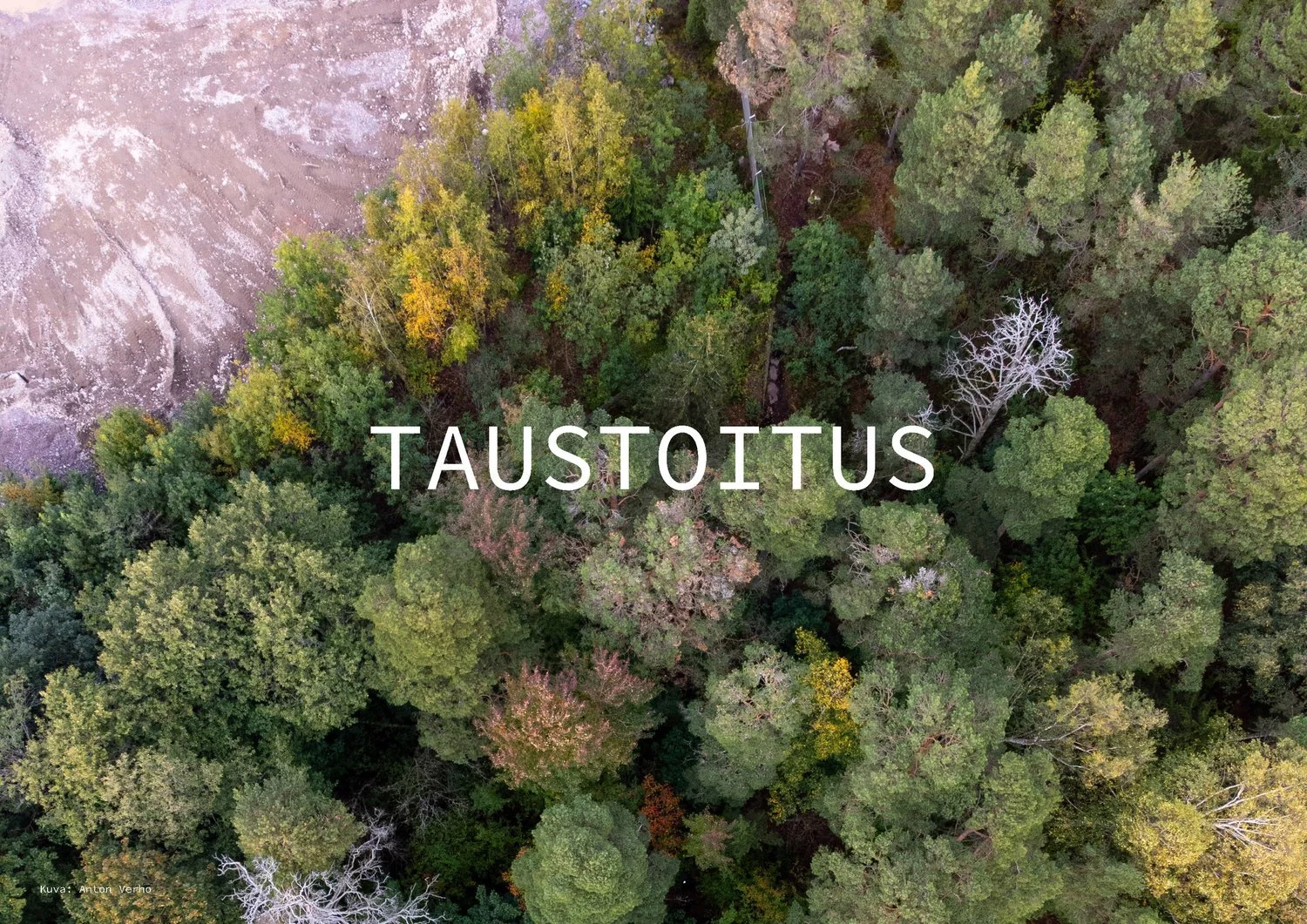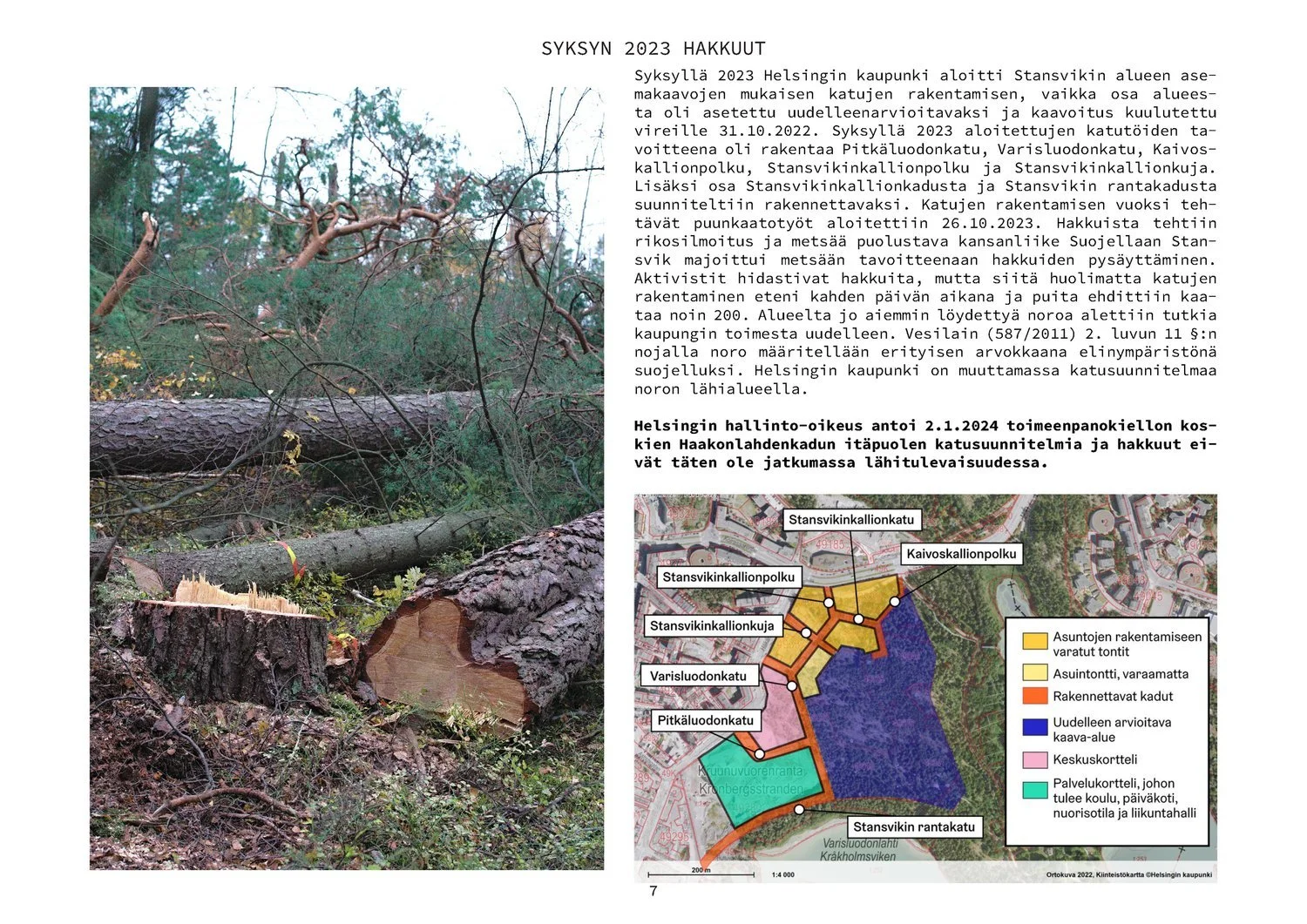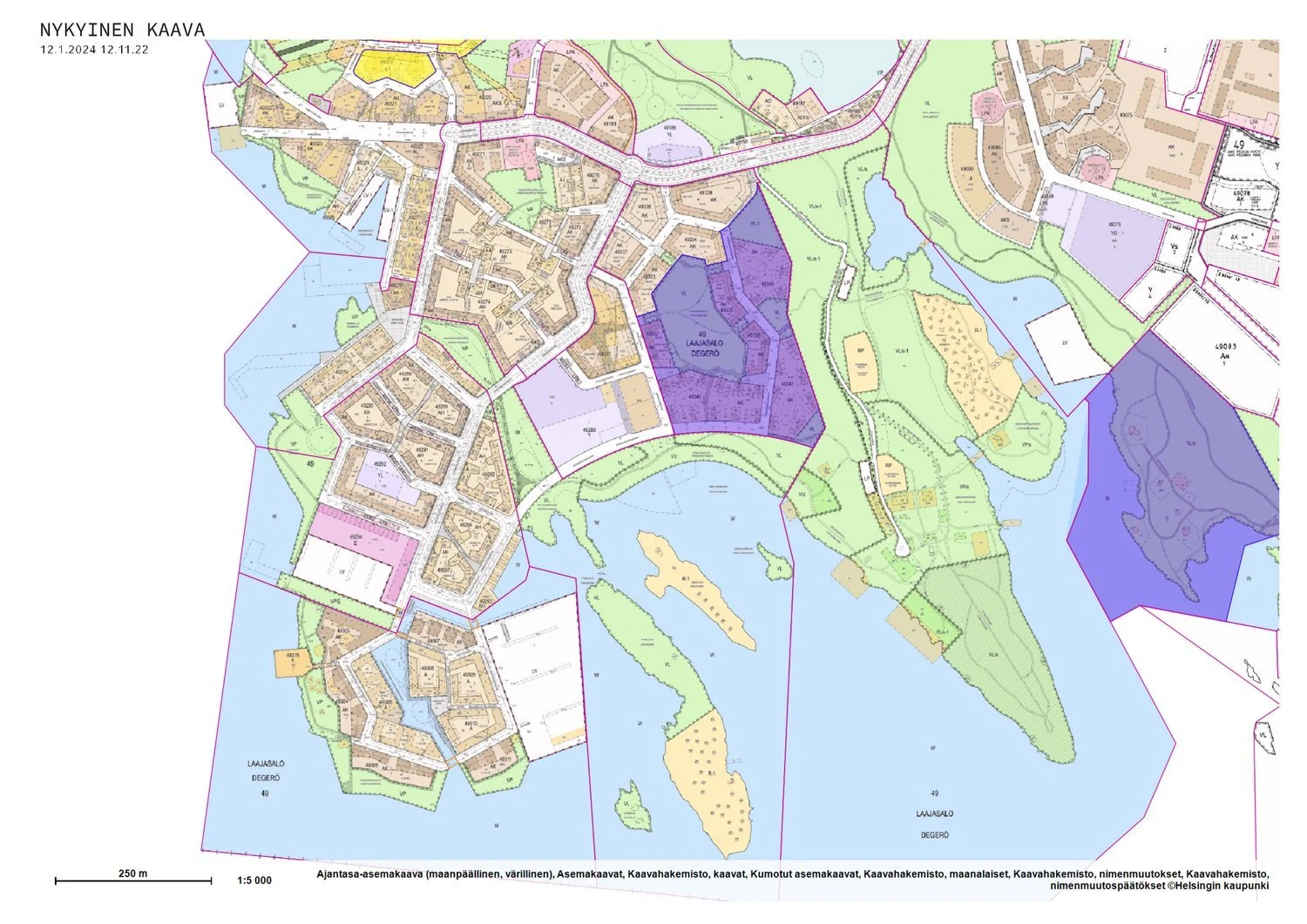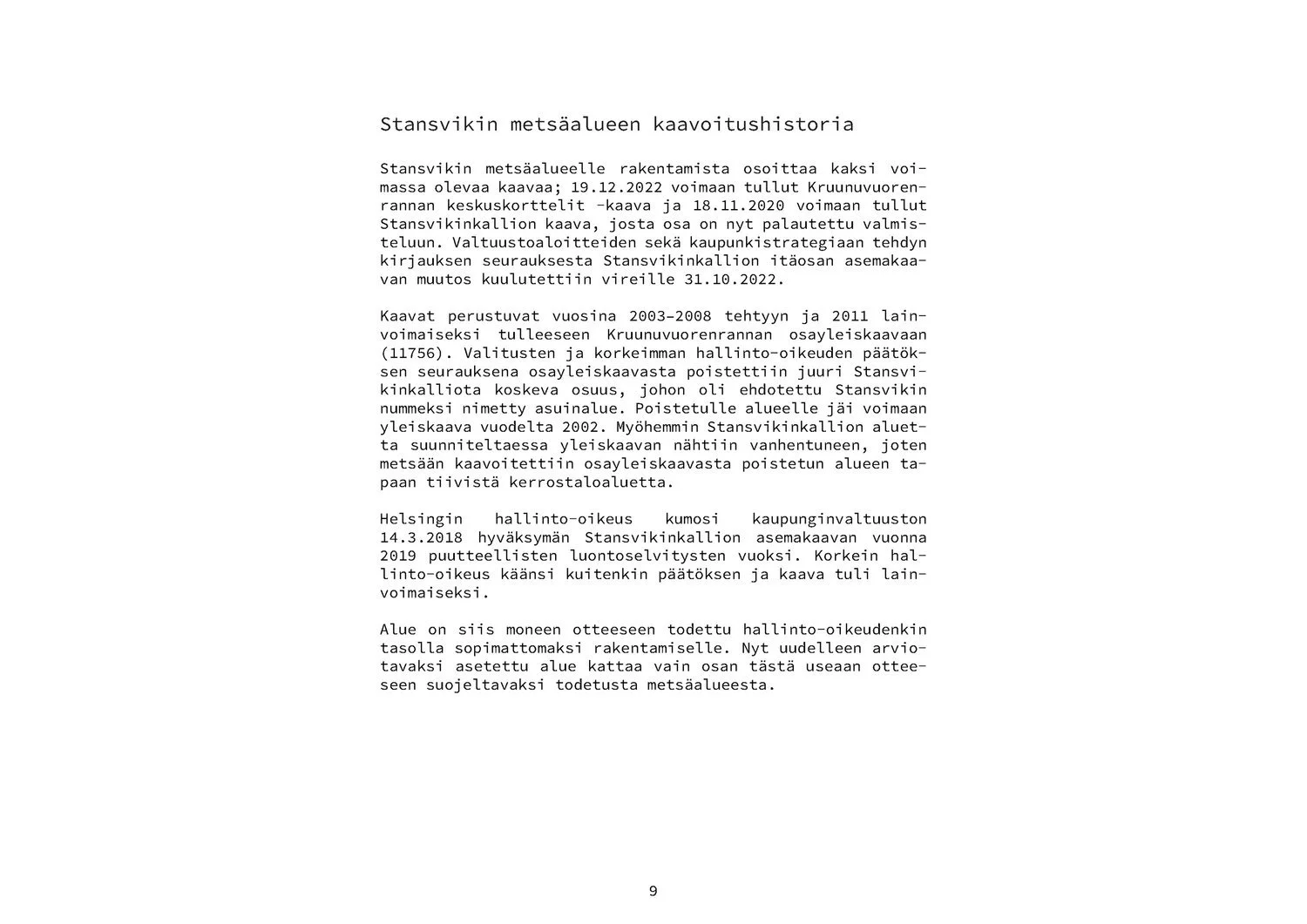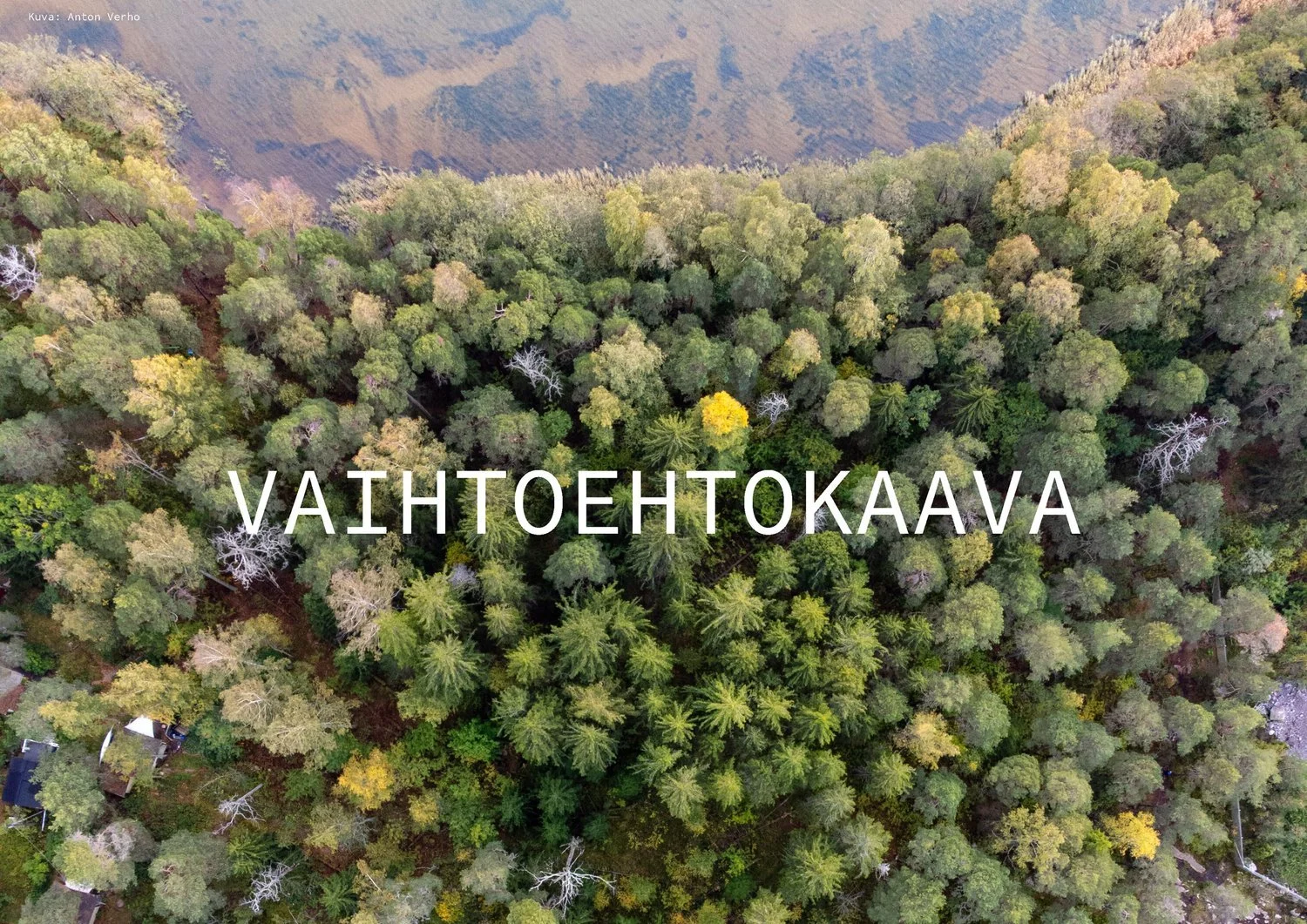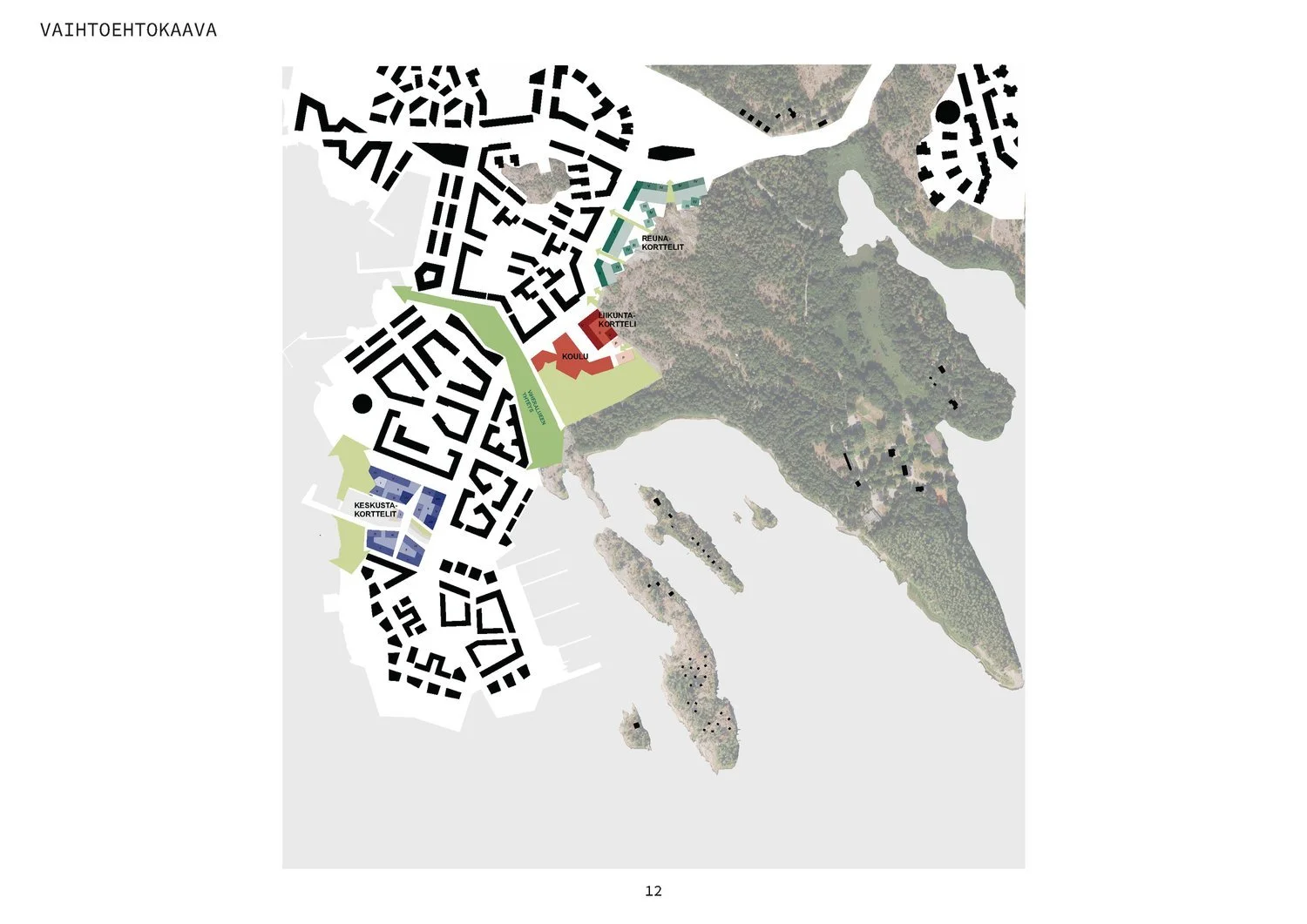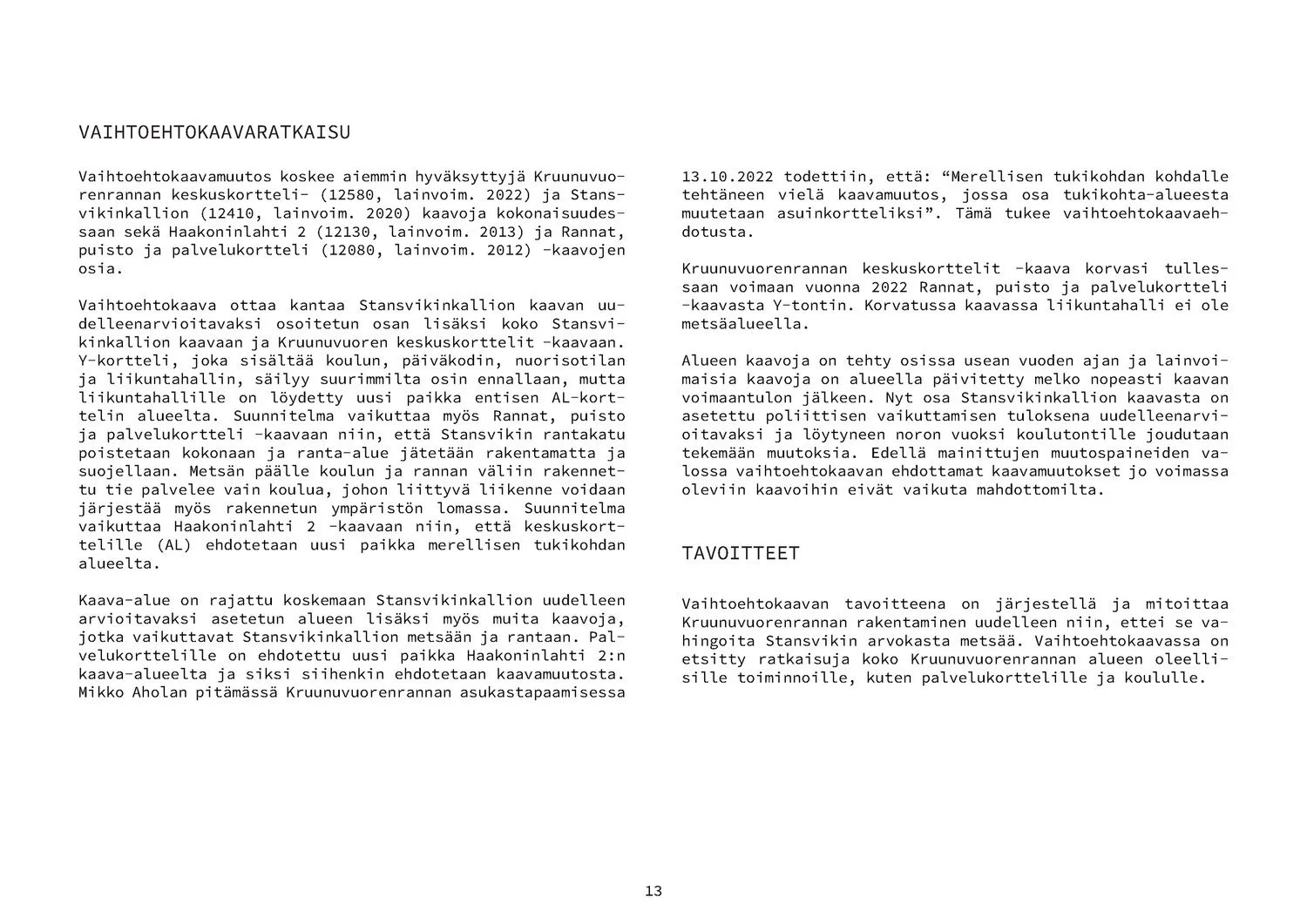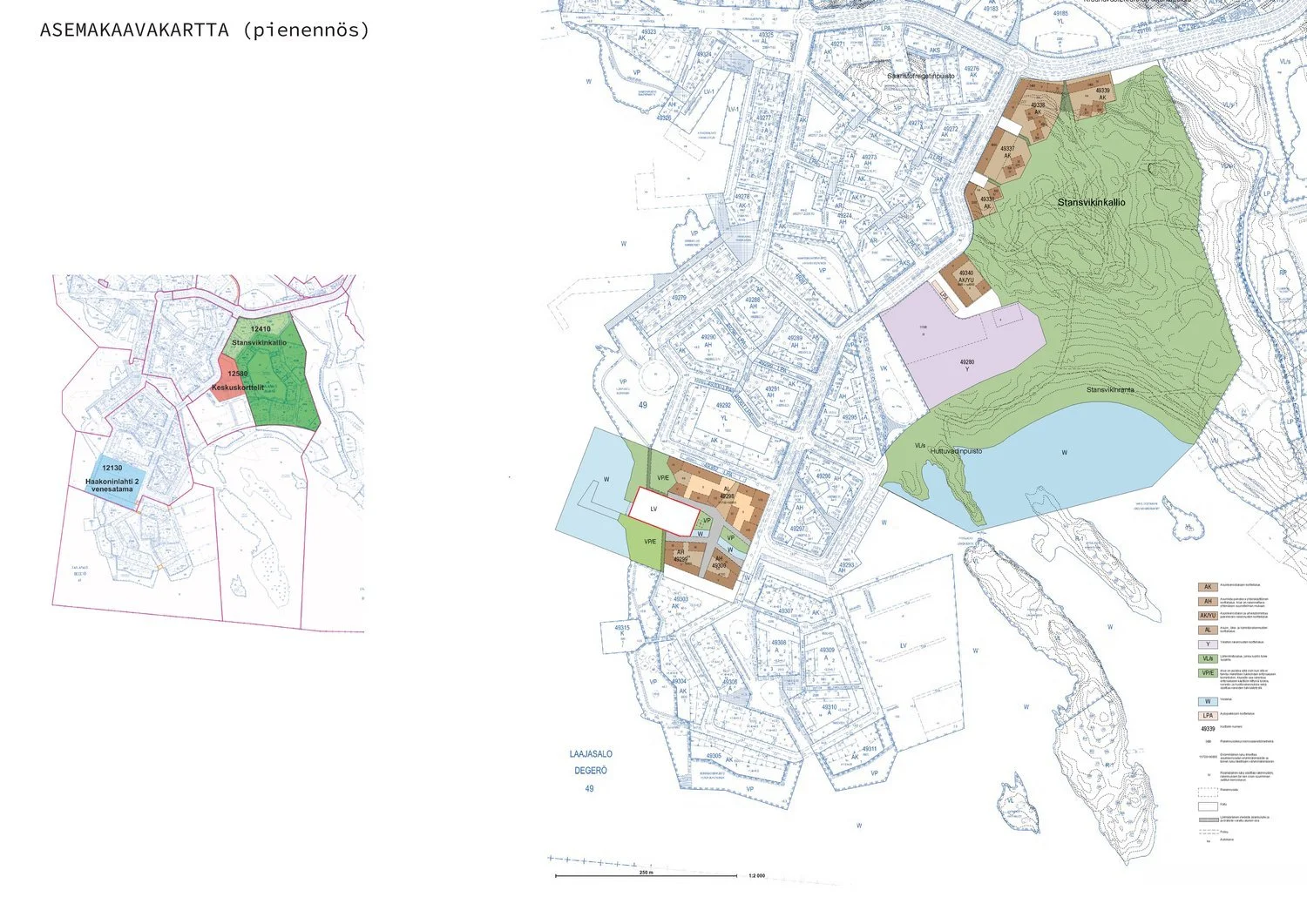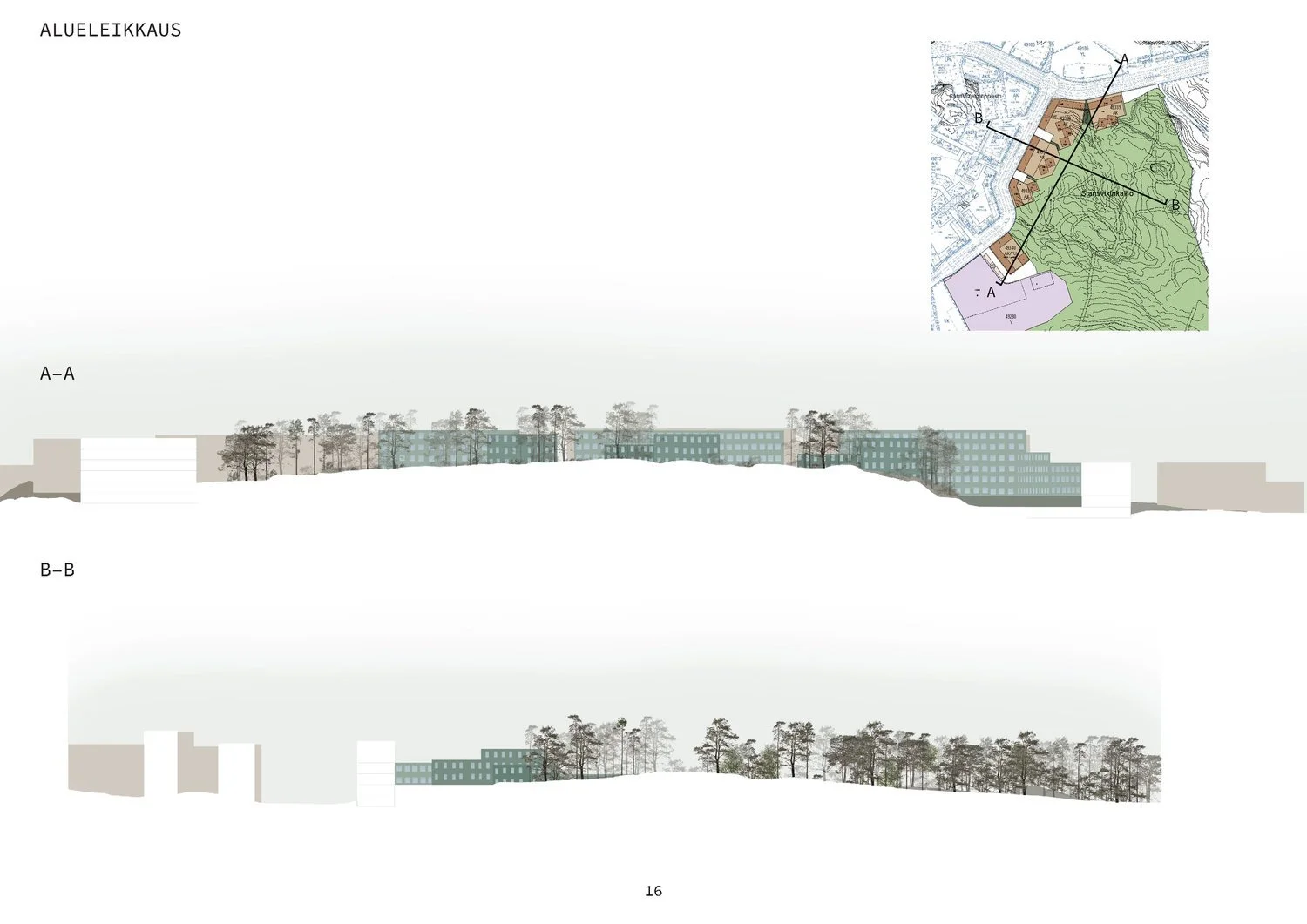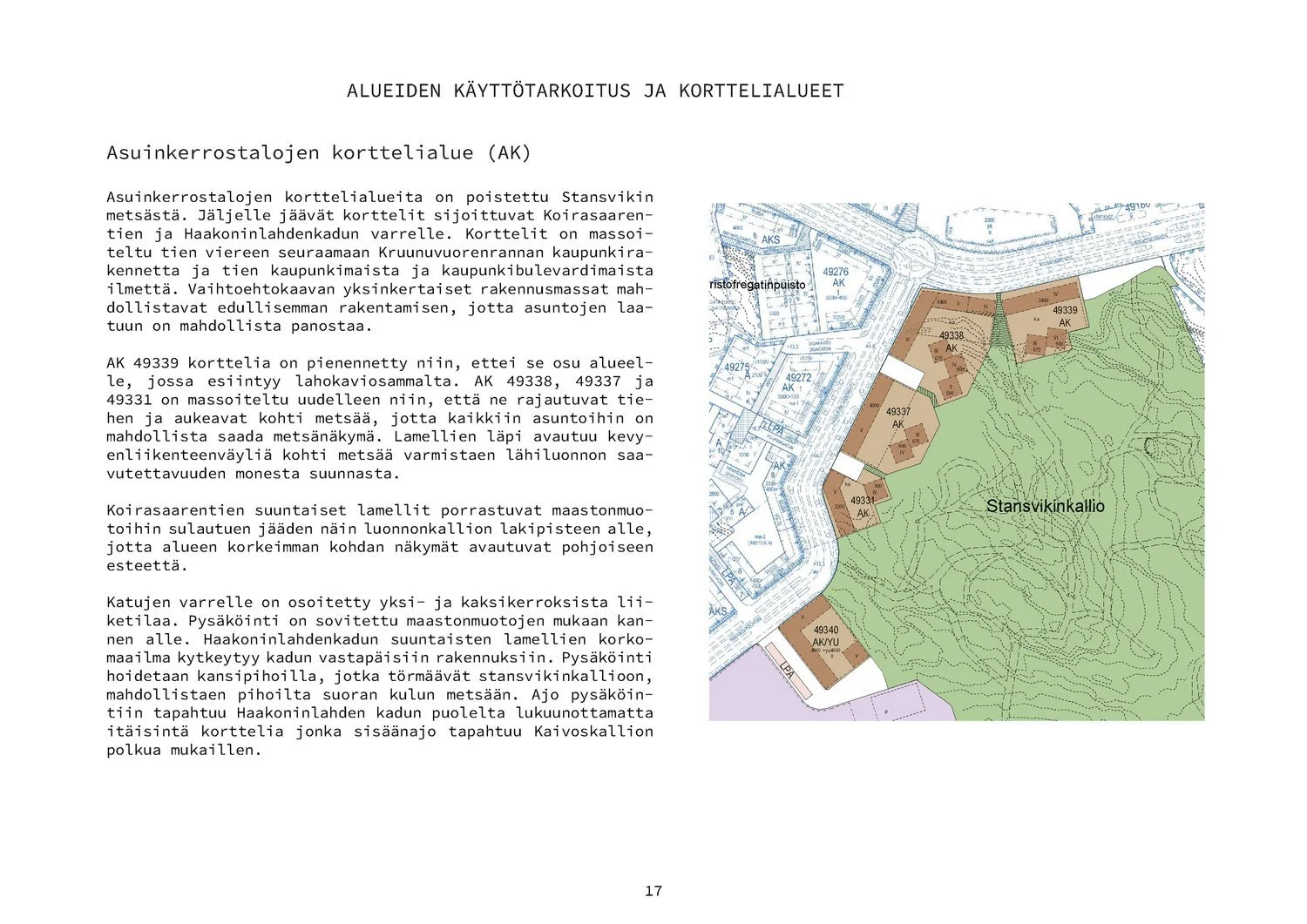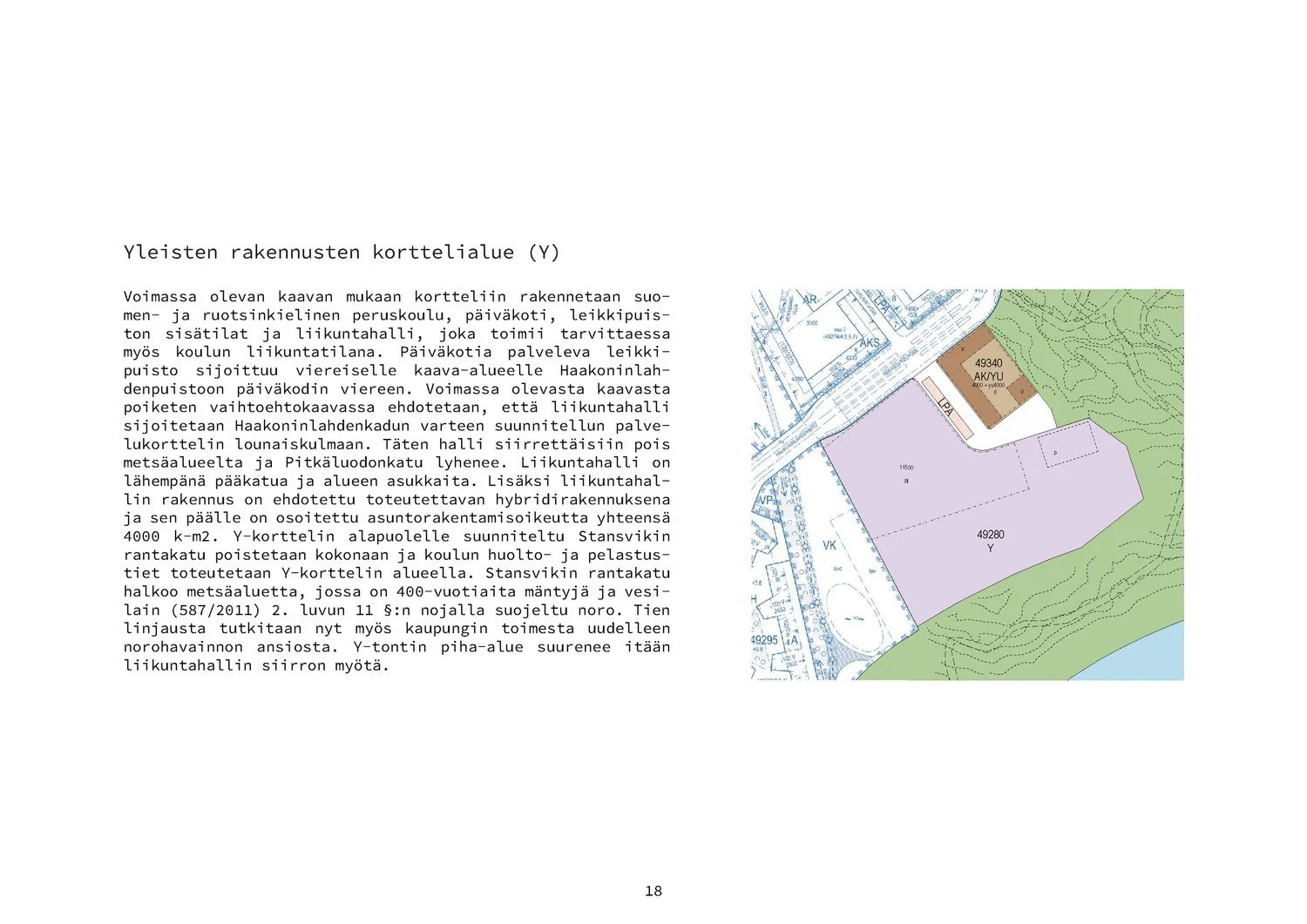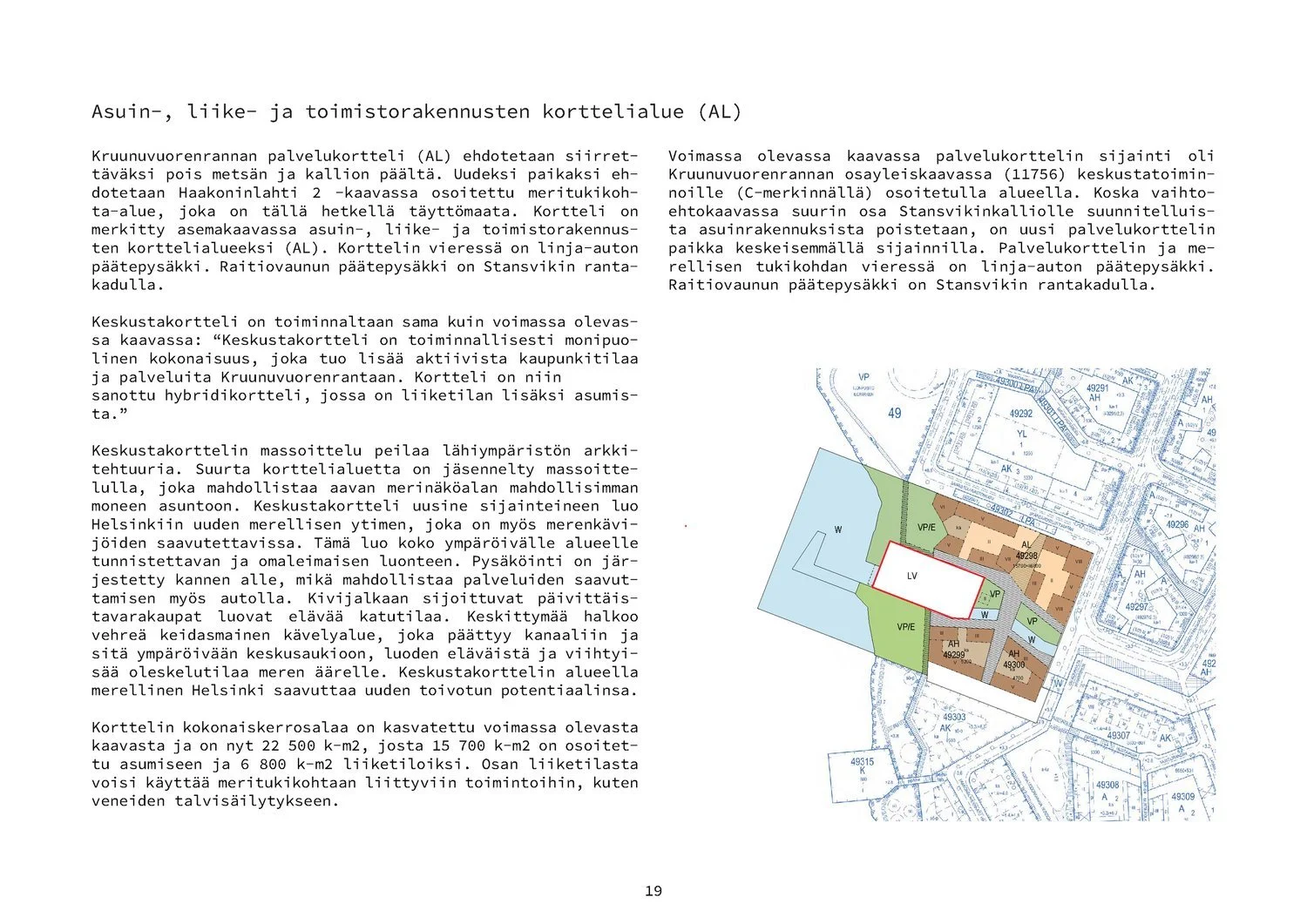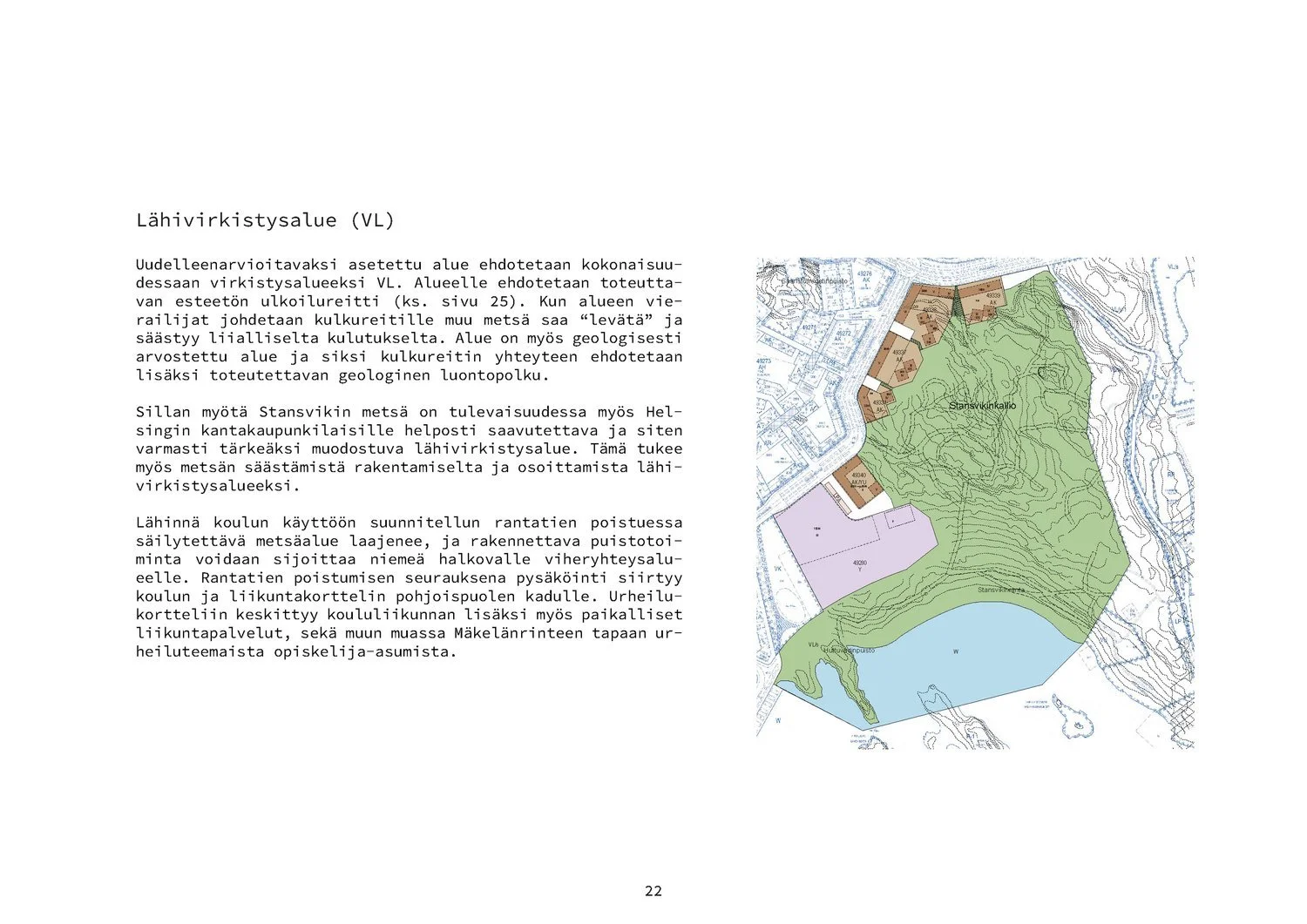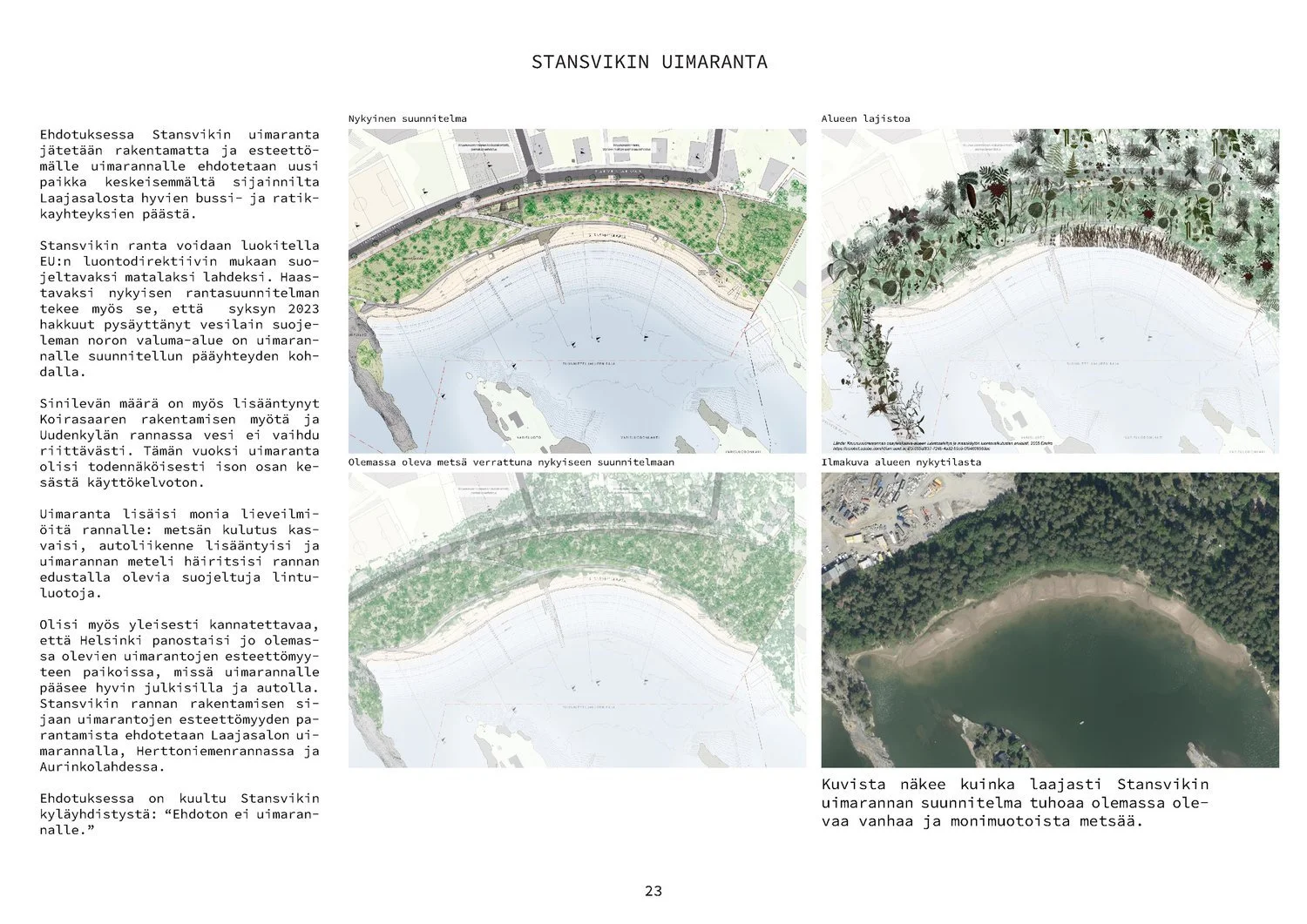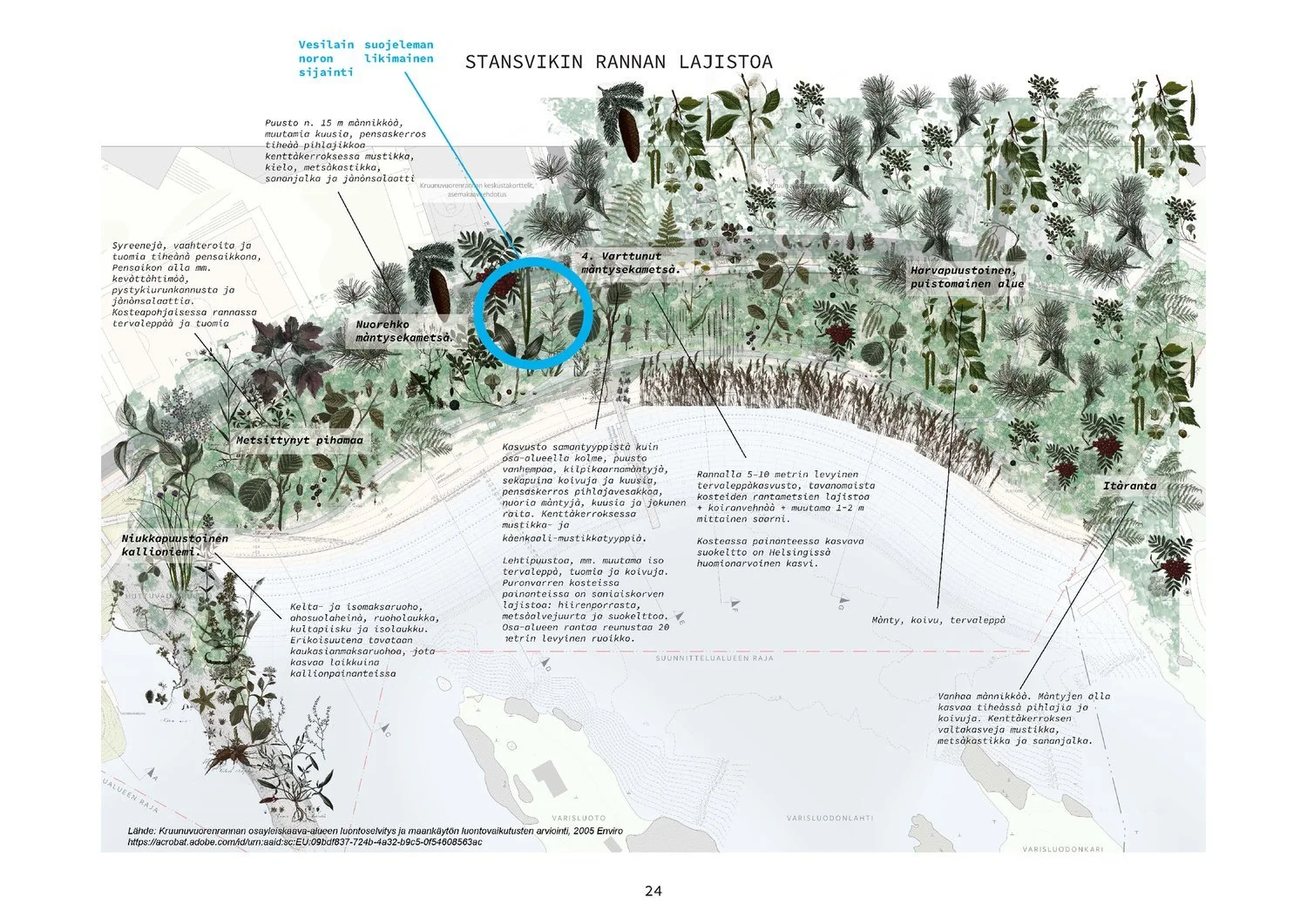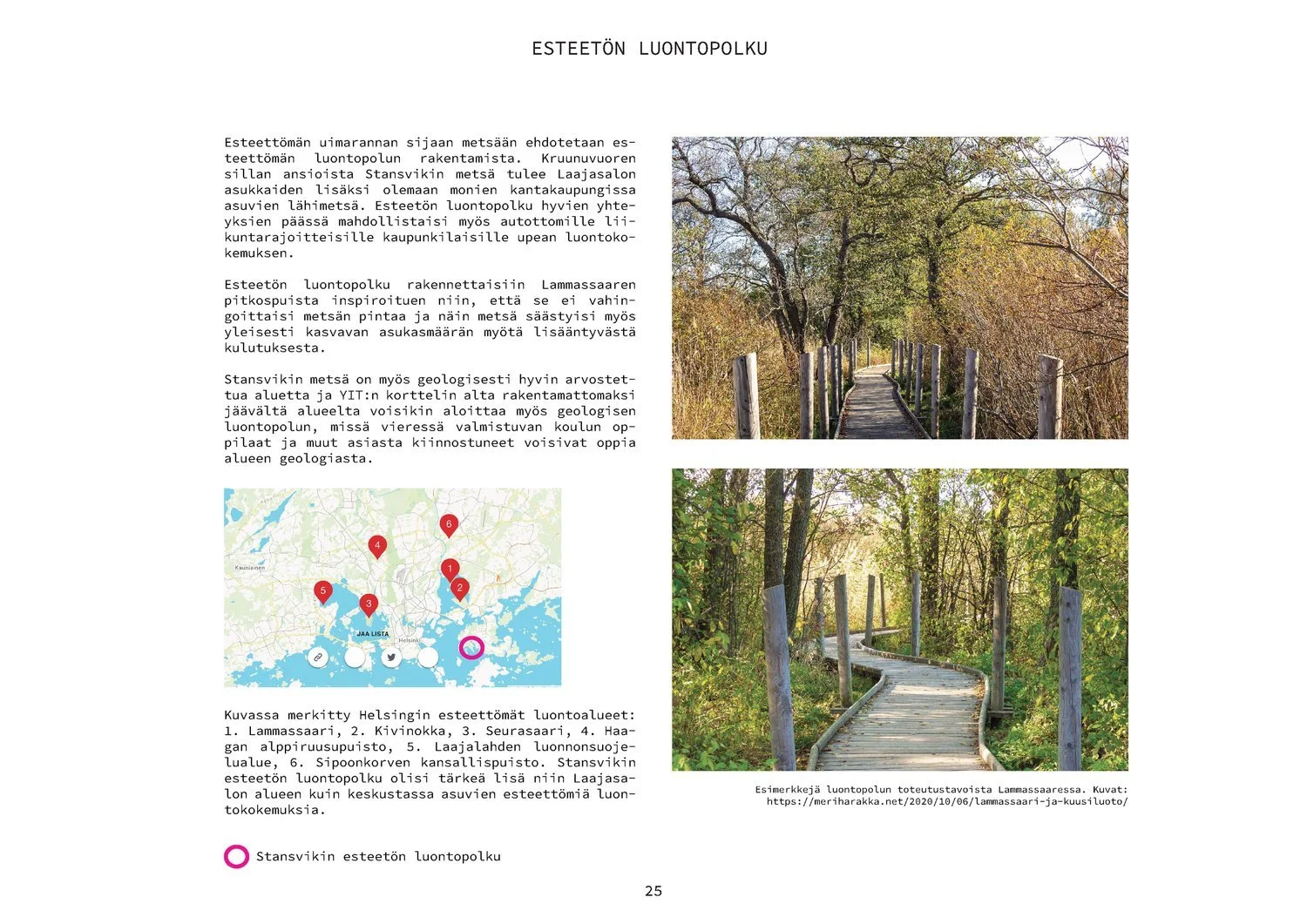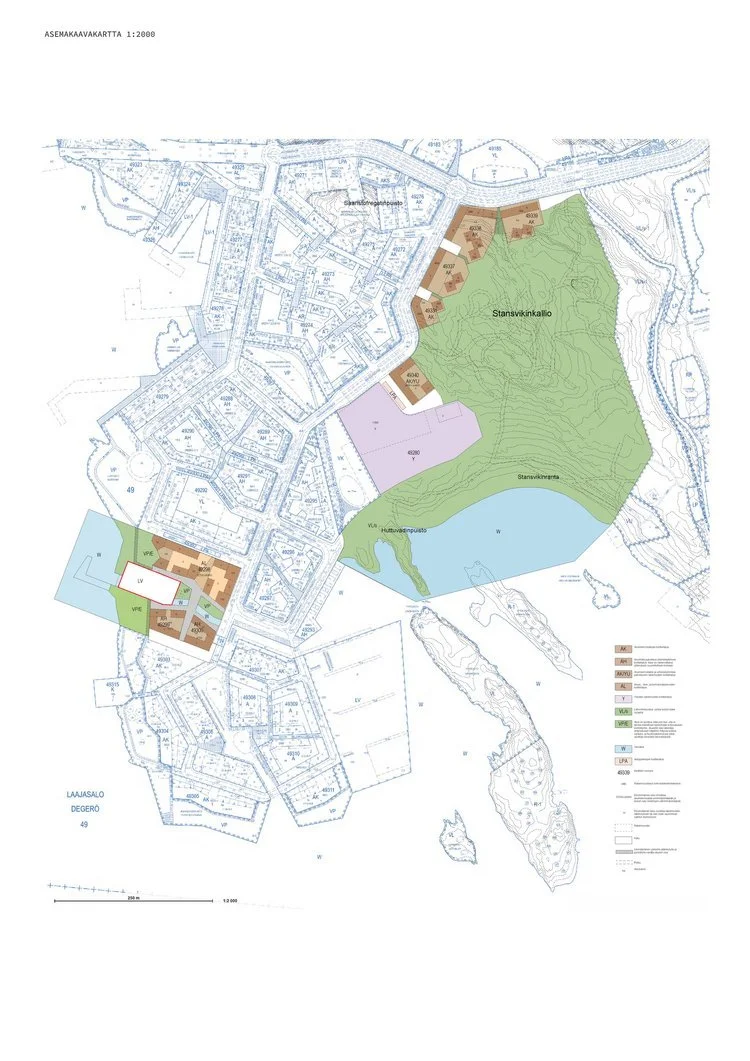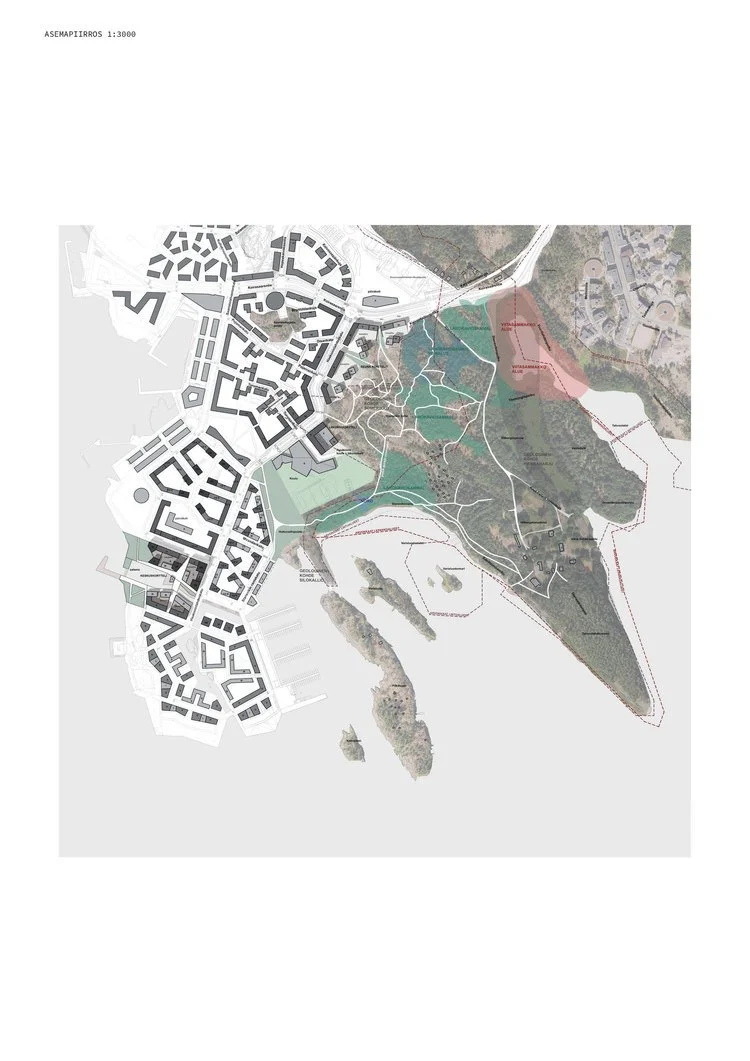Alternative Urban Plan for Stansvik
2024
Team: Cecilia Aintila, Heljä Nieminen, Siiri Hänninen and Seela Pentikäinen
The alternative plan for Stansvik has been developed in collaboration with Suojellaan Stansvik and Kaadetaan kaava -communities and with the support of the Finnish Nature Conservation Foundation (SLL) and the Arts Promotion Center Finland (TAIKE).
The diverse nature area of Stansvik is irreplaceable for biodiversity, the ecological sustainability of the Helsinki area, and the well-being of its residents. For this reason, efforts have been made to protect it from development for the past 20 years. Current zoning plans allow for nearly complete construction in the forested parts of the area. A significant part of the most destructive zoning plan for Stansvikinkallio is currently under reassessment due to widespread opposition and persistent advocacy.
There is still an opportunity to protect the valuable forest areas of Stansvik from development. The alternative plan aims to demonstrate how urban density can be increased while preserving the forest. There is no need to destroy the forest for construction; rather, the volume of building can be adjusted to fit the area, and the placement of buildings can be reconsidered.
This alternative plan has been created at the request of the Save Stansvik grassroots movement in a situation where logging machines have already begun to fell trees in the planning area. The controversial plans are based on a partial master plan for Kruunuvuorenranta initiated in 2003, and this forest area is now under administrative review for the third time.
Alternative planning is one way to participate in and influence decision-making. Alternative plans, sometimes referred to as shadow plans, can be more effective than mere statements when criticism is presented through urban planning visuals and solutions. Although the reception of alternative plans by planners is often critical, their impact can nonetheless be strong and long-lasting. For example, the plan that came into force in Meri-Rastila in 2022 largely follows the structure of an alternative plan developed in 2012.
The negative reception of alternative plans is often justified by claims that the alternative is presented too late in the process, and that the planning has already advanced too far. Ultimately, however, the pace of planning is determined by the members of the City Environment Committee and the City Council, or the administrative court, which can nullify the work of urban planners with their decisions.
The Helsinki Growth Strategy 2021–2025 states: “We will reassess the zoning plan for Stansvikinkallio from the perspective of forest nature values, alongside the repealed sections of the Kruunuvuori zoning plan.” This directive means that part of the already approved Stansvikinkallio plan has been set for reassessment. This proves, once again, that plans already made can be changed.
